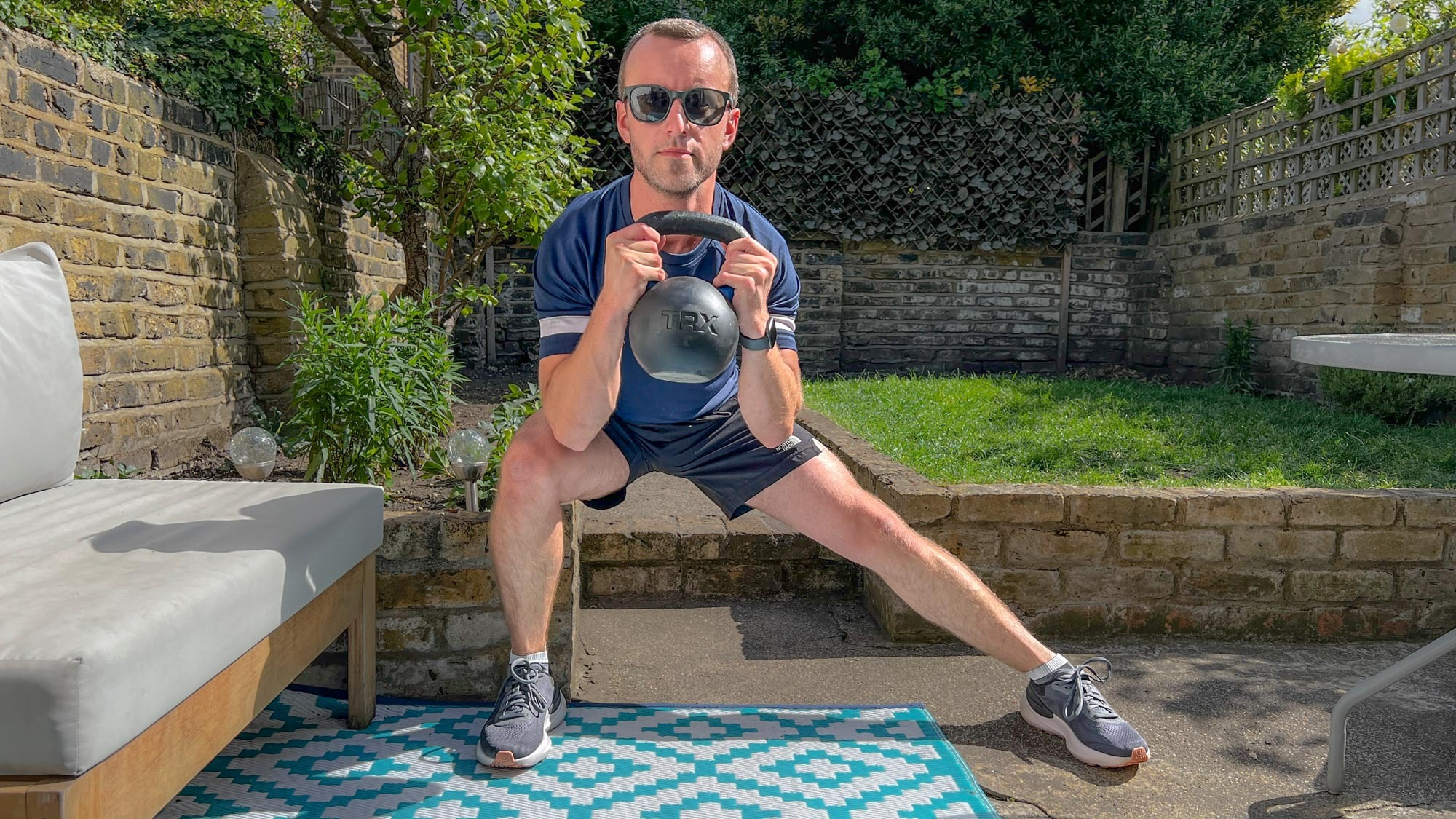I tried 50 kettlebell Cossack squats every day for a week — here's what happened
One move to work your whole body

I really enjoy working out with kettlebells. My introduction to weight training was through gym equipment and dumbbells, but once I learned how to use a kettlebell properly, it became a regular staple in my workouts at the gym and at home.
Although I still primarily use my adjustable dumbbells for strength training at home, I did invest in one of the best kettlebells and have used it as part of many resistance sessions, often alternating between both styles of weight in the same routine.
But, as much as I like kettlebell swings, I wanted to find a move that’ll be a bit different and focused more on developing stability instead of raising my heart rate. That’s how I landed on the kettlebell Cossack squat, a weighted variation on the classic bodyweight exercise.
If you do the move with just your body weight, it’s like a deeper version of a side lunge. But, add the kettlebell in, and you really need to engage your core to keep your balance as you step out to the side and drop down into the squat. So, I decided to give it a try.
How to do a kettlebell Cossack squat
- Stand tall with your legs wider than shoulder-distance apart, toes pointing forwards, holding a kettlebell with both hands in front of your chest.
- From this position, bend your right knee, moving your weight over to your right side, lower into a side squat and straighten your left leg.
- Hold this position for a few moments, ensuring your core stays engaged, the weight remains in front of your chest, and your shoulder blades are back and down.
- If you want to add external rotation around your hip, lift your left toes upward and keep your heel on the ground.
- Then, push through your right heel, return to the starting position, and immediately repeat the process on the other side.
After practicing the technique a few times, I felt ready to add the kettlebell Cossack squat into my daily routine. Although I don’t do a full strength training workout every day, I figured I’d be able to fit in 50 repetitions throughout the day. So, I picked up my weight and got to work.
It was harder than I expected
During this challenge, I purposefully added many repetitions of this exercise into my routine, but it wasn’t my first time doing the move, as it’d been in many routines I’d done before. But I don’t think I’d ever actually done it properly before taking this week-long test.
As I was really focused on my form this time, I made sure my legs were actually wide (not just slightly wider than my shoulders) and lowered as far as I could into the squat, it worked a lot of lower body muscles that I hadn’t engaged in this exercise before.
Plus, the extra weight of the kettlebell didn’t feel too difficult on the way down, but it added to the imbalance between the right and left sides when you’re deep in the squat, and meant that I needed to add more power on the way back up to overcome the additional load.
All sides were not equal
I’m hypermobile, which means the connections around my joints are often looser than you’d expect. I notice the effects when I’m out walking (which I do every morning), and when I need to stand still, as my right leg is much more flexible, especially around my hip.
This has its downsides (I find it hard to stand tall and still with both legs straight), but this additional flexibility on my right side meant that the squat on the right felt a lot easier than it did every time I tackled the left side kettlebell Cossack squat.
So I found myself enjoying the right rep, while really struggling with the left one, as my hip just wasn’t as mobile, and I’d often not do the additional toe point as a result. Or, if I did, it’d affect the way the rest of my body was positioned, causing me to lean forward slightly.
Despite a rocky start on the first day, on the second, I chose not to add the toe point on the left side and focused on the rest of the technique instead. And it was surprising how quickly I noticed a difference — by day seven, I’d added the external rotation back in (even if I was a bit wobbly).
It was easy to forget about my shoulders
When you’re stressed, you probably notice that you tense your shoulders and they rise towards your neck more than usual. This is also quite common when you’re exercising with weights, especially when you’re not as focused on the upper body, as I was here.
The standard Cossack squat is primarily a lower body exercise, designed to work your legs, quads, glutes, and ankles, with the core chiming in for stability. But with the kettlebell in hand, I often put my focus on my legs and not on my chest and shoulders.
So my shoulders would be up high, creating an arch around my upper back. But after a couple of days, I began to spot this quicker and would straighten my back, bring my shoulder blades down, and keep my chest proud.
Once my positioning was in place, it made lowering into the squat much easier and more effective too. At the end of the week, I'm undecided on if I'll continue to employ the Cossack squat, but I recommend everyone give it a go at some stage to help mix up their kettlebell workout routines.
More from Tom’s Guide
Sign up to get the BEST of Tom's Guide direct to your inbox.
Get instant access to breaking news, the hottest reviews, great deals and helpful tips.

James is Tom's Guide's Buying Guide Editor, overseeing the site's buying advice. He was previously Fitness Editor, covering strength training workouts, cardio exercise, and accessible ways to improve your health and wellbeing.His first job at as a sales assistant in a department store, and this is where James learned how important it is to help people make purchasing decisions that are right for their needs, whether that's a fountain pen to give as a gift or a new fridge for their kitchen.
This skill stayed with him as he developed a career in journalism as a freelance technology writer and, later, as Buying Guide Editor for MakeUseOf, where his interest in fitness combined with his commitment to impartial buying advice.
This is how he came to join Fit&Well as Fitness Editor, covering beginner-friendly exercise routines, affordable ways to boost your wellbeing, and reviewed weights, rowing machines, and workout headphones.
James is an advocate for sustainability and reparability, and focuses his reviews and advice through that lens to offer objective insights as to whether a specific product or service will be right for your needs.

